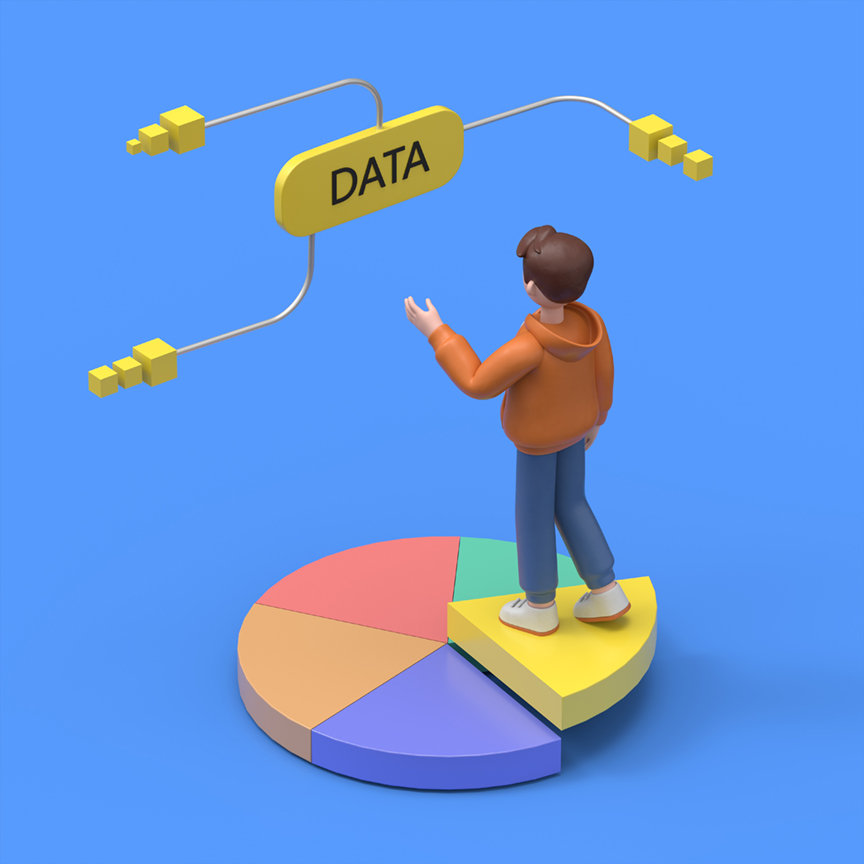
How do circle graphs communicate information?
To start the year, a Grade 7 teacher wanted to emphasize to her learners that math is a means of communicating ideas and not just a process of calculating to obtain a correct answer. To do so, learners were tasked with producing a circle graph (pie chart) to communicate information about a subject of their choice. To make the graph, they researched real-life statistics about a chosen subject they had personal interest in or were passionate about (for example, the number of subscribers for the top five YouTubers or the top five types of ice cream purchased by Canadians each year). Other investigations included the number of people who play the five (or more) most popular video games, the top five (or more) teams that had won their sport’s highest prize, and the top five (or more) most popular cars sold in Canada last year. Learners were to be intentional in ensuring the topic they chose had strong meaning and connection to them personally as they set off on their research.
After their investigation was complete, learners began to work on their graphing task to communicate the data they had found. Needing a minimum of five segments on their circle graph, they measured the interior angle of each segment, calculated its fraction of 360°, and drew their circle graph by hand. The purpose of these circle graphs was to compare information. Learners needed guidance to choose appropriate subjects to ensure they could compare statistics to a “whole.” Deciding what their whole circle graph represented emerged as an important learning opportunity. Learners needed to know that their whole was to accurately show the proportion (fraction or percentage) represented by each segment of the graph.
Learners were given a number of questions about their graph to reflect on to help deepen their understanding (e.g., “What does your whole circle graph represent?”, “How could the information in your graph help someone make a decision?”, “Which segment of your graph is the most interesting to you?”, “Why?”).
Mini-lessons were also offered, as the teacher modelled and explained the importance of considering who the audience would be for the graph, clearly communicating numerical data by using legends, and explaining how the colour and titles were important to enhance the effectiveness of the circle graph in communicating information.
It was important to allow learners some productive struggle to understand what total their whole circle graph represented. Asking intentional questions helped some learners make the needed connections. (For example, “If each segment represents one of the five most popular flavours of ice cream purchased in Canada, what does the whole circle represent?” It does not represent all the ice cream purchased in Canada, but rather the sum of the purchases of the top five flavours.)
Once the investigation and graphing work was done, the teachers and learners co-constructed the criteria for presentation of these circle graphs to the class so that all could learn from each other. Part of the decided expectations was to share not only information related to the graphing experience and results, but to also share why they chose this specific topic and how it was meaningful to them as individuals. The presentations ultimately also served as a community-building opportunity for learners to get to know each other.
In Grades 4 and 5, when learners begin to learn about fractions and decimals, labelling their graphs with fractions and/or decimals is a great way to reinforce the big ideas of fractions as parts of a whole, the meanings of numerator and denominator, and finding decimal equivalence for fractions.
Grade 6 learners could use percentages or ratios as labels. They could also estimate, classify, draw, and label interior angles of their circle graph.
Grades 4, 5, and 6 learners could also use technology, such as a spreadsheet program, to enter their data and have the app produce the circle graph. They could then analyze the graph to draw conclusions, some of which might be related to specific learning outcomes, as listed below.
An extension for Grade 7 learners was to calculate the area represented by each segment and by the whole circle, according to Shape and Space outcomes in the curriculum. This project also worked for Grade 6 Math. Grade 6 learners selected a method for gathering data (see Grade 6 Math SLO 6.SP.2) that may have included research, and many chose to survey their classmates.
Ideas for differentiation include the following:
This learning experience can be shifted to other types of graphs, according to curricular outcomes and subject areas.